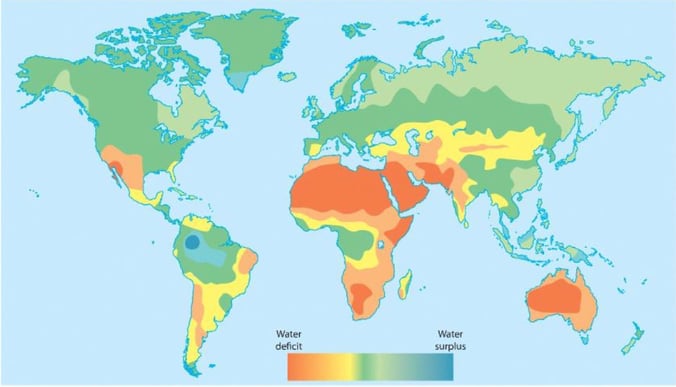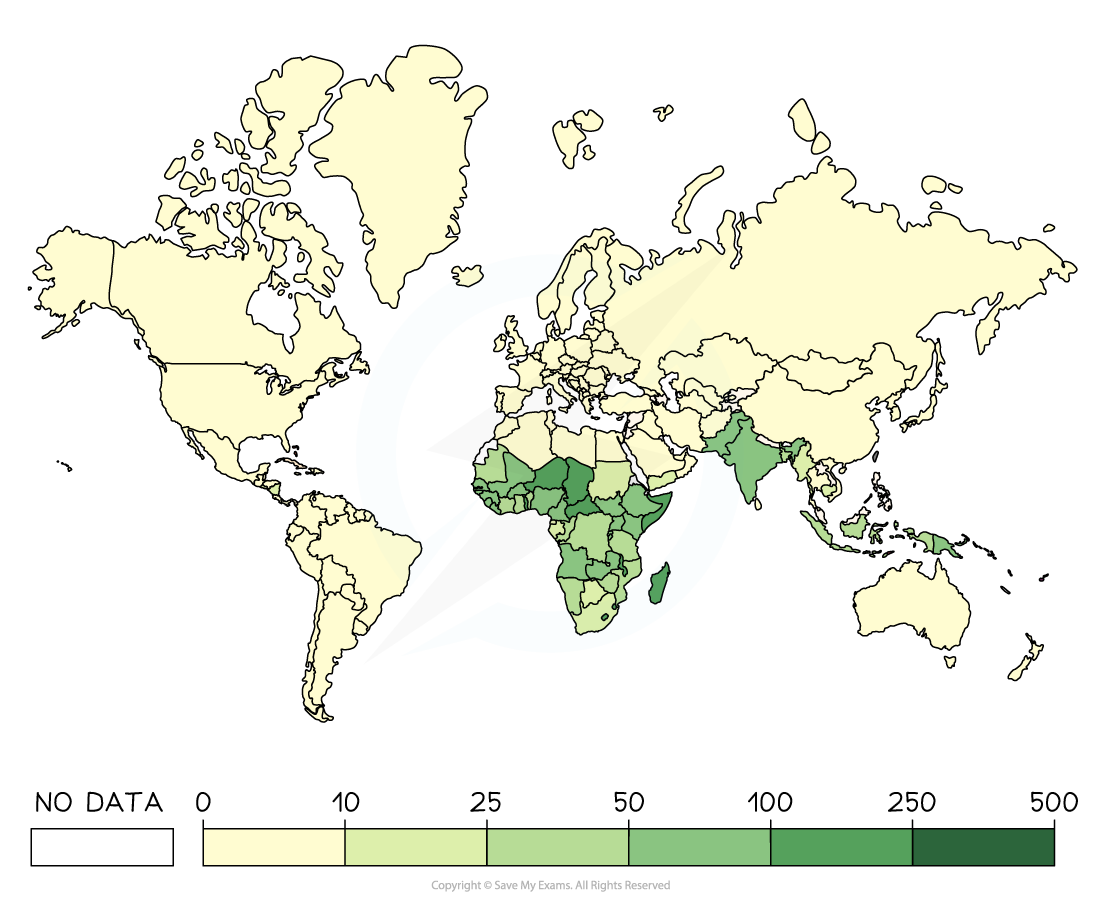Global Distribution of Water
- Water is essential for life but only 2.5% of water on Earth is freshwater

Sources of water
- It is used in all aspects of life for domestic use, agriculture, industry and energy
- Global water use by sector is:
- 70% agriculture: irrigation of crops and water for livestock
- 20% industry: producing goods and generating energy
- 10% domestic: toilets, cooking, cleaning, washing
- The use by sector varies across countries depending on whether they are HIC, NEE or LIC
- Water supplies are not evenly distributed across the globe
Factors affecting supply
-
- Climate: the amount of precipitation, rates of evapotranspiration and changes in climate affects the water available
- Geology: affects where aquifers and groundwater are located and how much water is stored
- Rivers: where they flow affects the availability of water
- Pollution: 80% of waste water is untreated this impacts on the water quality and whether it is safe to use
- Over-abstraction: reduces the available stores of water
- Infrastructure: pipes and canals used to transfer water, water treatment works and pumping stations are all expensive and many LICs lack infrastructure particularly in rural areas due to the cost. Even in HICs and NEEs remote and rural areas may not have the infrastructure needed to supply water
- Poverty: lack of money means that people cannot afford a clean water supply or bottled water
Water security
- To be water secure is to have a clean, reliable source of water
- A place or country that does not have this is water insecure
Water surplus
- Areas of water surplus (where the supply of water is greater than the demand) may be the result of:
- High supply: high precipitation, low evaporation rates, effective water management
- Low demand: low population, effective water management, low temperatures
- A combination of high supply and low demand
- Areas with a surplus include:
- North-east Brazil in the Amazon rainforest
- Canada and parts of north USA
- Russia
Water deficit
- Areas of water deficit (where the demand for water is greater than the supply) may be the result of:
- Low supply: lack of precipitation, high levels of evaporation, poor water management
- High demand: increasing population, industry and agriculture
- A combination of low supply and high demand
- Areas with the greatest water deficit include:
- Australia
- North, East and South Africa
- Middle East
- West USA
- Parts of South America
- India

Water surplus and deficit
- There are different levels of water shortage: these are water stress and water scarcity:
- Water stress occurs when the supply of water is below 1700m3 a year per person
- Water scarcity is when the supply is below 1000m3 a year per person
Reasons for increasing water consumption
- Water consumption is increasing across the world

Global freshwater use
- Population growth: there are now over 8 billion people
- Each person requires about 2 litres of clean drinking water a day to remain in good health
- In addition 18 litres per person is needed for things like sanitation and cooking
- As well as an increase in domestic water demand, population growth also increases the use of water for:
- Energy production
- Agriculture
- Industry
- Economic development: as countries develop the demand for water increases because:
- People have more items which use water such as dishwashers, toilets and showers
- Industry increases and factories use large quantities of water
- Intensive agriculture is needed as people eat more food, and irrigation systems use large quantities of water
- As more people move to urban areas the demand for water for drinking and sanitation increases
Worked example
Describe the distribution of countries which had 76-90% access to basic drinking water services as shown in Figure 1.
[2 marks]
- Answers should make use of Figure 12 through naming countries and affected areas in order to describe the pattern and should be focussed on the 76-90% category
Answer:
- One mark for a basic statement, e.g.
- Nearly all on the coast [1]
- The biggest area is Southern Africa [1]
- Apart from one group of 3 they are all isolated [1]
- 4 out of the 8 are in Western Africa [1]
- Second mark may be a second separate point or developed point for further descriptive clarity, e.g.
- Nearly all on the coast [1] except Botswana (d) [1]
- The biggest area is Southern Africa [1] with the 3 largest countries in the category all next to each other (d) [1]
- Apart from one group of 3 they are all isolated [1] and quite evenly spaced along the central and western coastline (d) [1]
- 4 out of the 8 are in Western Africa [1] with the other 3 all grouped together on the southern tip of Africa (d) [1]
- You would receive no marks for description of any categories other than 76-90%.
No credit for explanation



